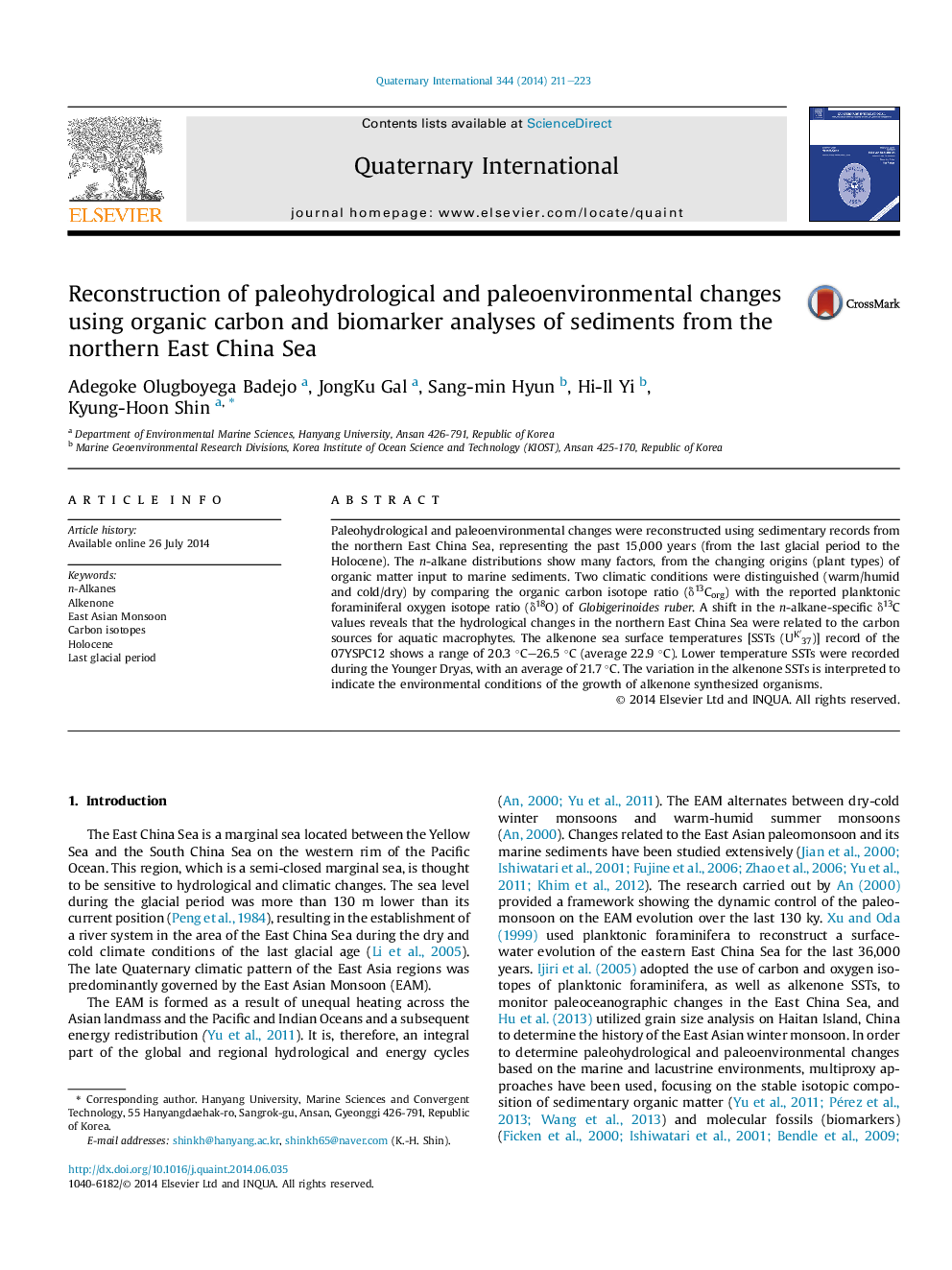| Article ID | Journal | Published Year | Pages | File Type |
|---|---|---|---|---|
| 1041217 | Quaternary International | 2014 | 13 Pages |
Paleohydrological and paleoenvironmental changes were reconstructed using sedimentary records from the northern East China Sea, representing the past 15,000 years (from the last glacial period to the Holocene). The n-alkane distributions show many factors, from the changing origins (plant types) of organic matter input to marine sediments. Two climatic conditions were distinguished (warm/humid and cold/dry) by comparing the organic carbon isotope ratio (δ13Corg) with the reported planktonic foraminiferal oxygen isotope ratio (δ18O) of Globigerinoides ruber. A shift in the n-alkane-specific δ13C values reveals that the hydrological changes in the northern East China Sea were related to the carbon sources for aquatic macrophytes. The alkenone sea surface temperatures [SSTs (UK′37)] record of the 07YSPC12 shows a range of 20.3 °C–26.5 °C (average 22.9 °C). Lower temperature SSTs were recorded during the Younger Dryas, with an average of 21.7 °C. The variation in the alkenone SSTs is interpreted to indicate the environmental conditions of the growth of alkenone synthesized organisms.
